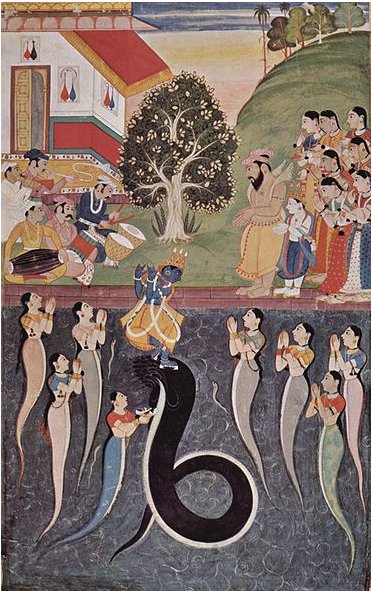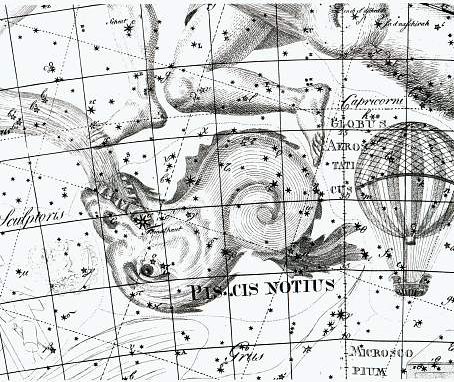1. The mouth of the fish (Moon) can be compared to the tail of the bird (Sun). If the tail corresponds to 'the last part of', then the mouth should represent 'the first part of'. Where Sun departs we can expect to find the 'mouth' of Moon. There is a complication to consider in Allen: "Al Tizini knew this [β Piscis Australis], instead of α, as Fum al Hūt, - evidence either of a different figuring of the constellation from that of Ptolemy, which we follow, or of its extension towards the northeast by the Arabian astronomers. This may account for the location of Fomalhaut in Aquarius by some early authors. With δ and ζ it was the Chinese Tien Kang, the Heavenly Rope. Al Tizini mentioned the stars, now γ, α, and β of Grus, as the Tail, the Bright One, and the Rear One of the Fish - additional proof that our lucida of Piscis Australis was not his nā'ir of Al Hūt al Janūbiyy. η, θ, ι, and μ were Tien Tsien, Heavenly Cash." The arabian word nā'ir means the brightest star in a constellation, i.e. it is a synonym to Latin lucida. Heavenly Cash (Tien Tsien) sounds like the same idea as in '... the Fish taken by St. Peter with a piece of money in its mouth ...' The name Heavenly Rope (Tien Kang) caught my attention. For instance does it remind me of the rope trick in India, where a rope is induced to miraculously stretch itself high up without any visible means of support - like a snake charmed. Serpents have no limbs and it seems impossible for them to 'stand up' - and even less possible for them to push the sky roof high in spring. "... The 'classic' version, however, was much more detailed: the rope would seem to rise high into the skies, disappearing from view. The boy would climb the rope and be lost to view. The magician would call back his boy assistant, and, on getting no response, become furious. The magician then armed himself with a knife or sword and climbed the rope, vanishing too. An argument would be heard, and then limbs would start falling, presumably cut from the assistant by the magician. When all the parts of the body, including the torso, landed on the ground, the magician would climb down the rope. He would collect the limbs and put them in a basket, or collect the limbs in one place and cover them with a cape or blanket. Soon the boy would appear, restored ..." (Wikipedia) The capacity of a serpentine body to stretch itself in full length vertically is much easier to believe if it happens down in the water:  The Serpent has its tail curled around similar to how the tail of Piscis Australis was drawn in the Uranographia of Johann Bode:
The Serpent in our new 'Garden of Eden' picture is surrounded by 4 + 4 = 8 females without any legs - such are not needed for swimming. We can see a little blue figure coming down on the black path which is the body of the Serpent. He is located between the upper half (with Tree and normal persons) and the lower part. He is playing the flute and I suggest he must be Krishna: "Krishna ... literally 'dark, black, dark-blue' is a central figure of Hinduism and is traditionally attributed the authorship of the Bhagavad Gita. He is known as the eighth and 'complete' avatar of Lord Vishnu, come to restore Dharma to the earth in a time of great dharmic imbalance ... Krishna is often described as an infant or young boy playing a flute ..." (Wikipedia) To restore order (dharma) is perhaps to lauch a new regular year after a number of chaotic extracalendrical dark nights. Maybe Tree and Serpent must be realigned. Could this be the origin of the idea of the Serpent climbing the Tree? |
